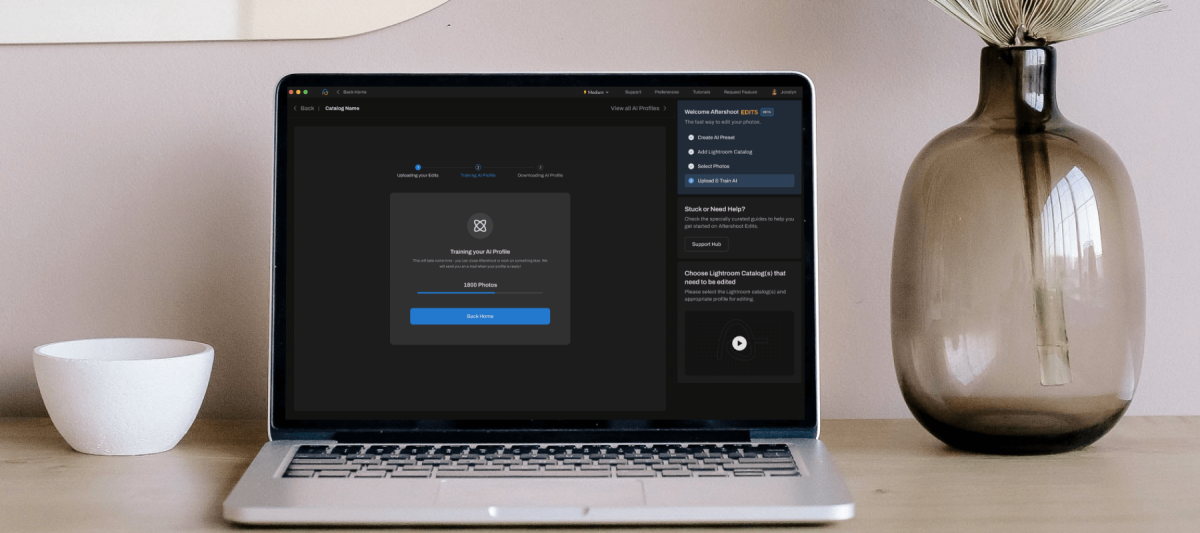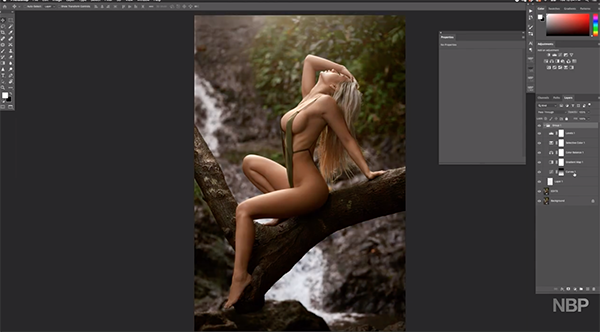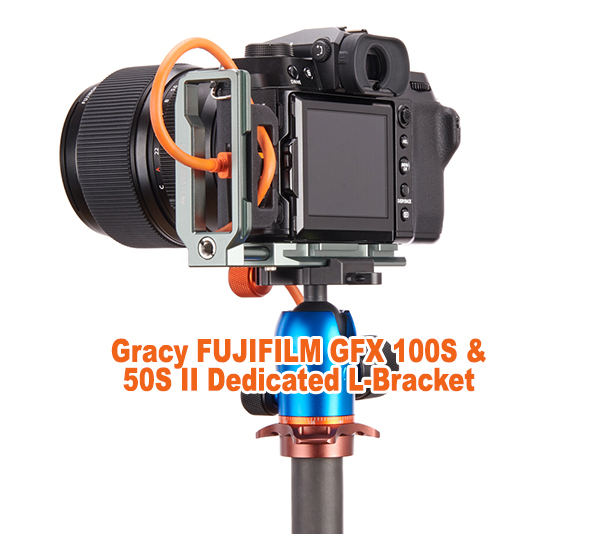The number of AI editing tools has taken an upswing. But with this advent of new tech comes a debate among photographers about striking a balance between efficiency and preserving their artistic vision.
In this article, we’ll explore what AI editing tools are here for, the challenges and benefits of using these AI tools, and how to achieve a harmonious balance between efficiency and creative expression.
What Do AI Editing Tools Do?
AI editing tools use algorithms and machine learning to automate and thereby speed up various aspects of the editing process.
These tools can perform tasks such as image selection, color grading, retouching, and even content generation.
By analyzing patterns, recognizing objects, and learning from large datasets, AI editing tools can assist photographers in enhancing their images more efficiently.
The main attraction to using these tools is that they offer fantastic time-saving benefits.
AI editing tools can save photographers many hours of manual labor, freeing them up for more personal time and more opportunities to focus on other aspects of their business, such as shooting more frequently and nurturing client relationships.
In short, AI editing in photography is not about replacing photographers; it’s about streamlining workflows.
Why Are Some Photographers Skeptical?
Despite the time-saving benefits of AI editing tools, some photographers remain skeptical about their use.
One of the main concerns is the fear of losing the personal touch and creative control that defines their artistic vision.
They worry that relying too heavily on AI tools may result in a generic aesthetic, eroding the uniqueness and authenticity of their work.
Additionally, there is a concern that AI editing tools may lead to a lack of skill development, as photographers may become overly reliant on automated processes instead of honing their craft.
These reservations highlight the need for a careful balance between efficiency and preserving the photographer’s individual artistic expression when integrating AI editing tools into their workflow.
Keep in mind that photography as an art form is deeply rooted in human emotion and creativity.
The human touch won’t be replaced where it matters most – scouting those perfect shots and capturing them with your unique vision.
AI alone cannot replicate the unique perspective and personal expression that photographers bring to their work.
Therefore, AI should be seen as a supportive tool that speeds up certain tasks while the photographer’s artistic vision still drives the final decisions.
How to Preserve Your Artistic Vision
Ultimately, it’s up to every photographer to ensure automation does not compromise their unique style and creative decisions.
By using AI tools with the mindset of “this is the starting point of my creative vision,” photographers can maintain control over important creative decisions and ensure the final edits align with their creative intent.
The key is to view AI as an assistant rather than a replacement, using it to enhance your creative process and achieve efficient results without sacrificing your authenticity.
Using AI to Enhance Your Creative Vision
The power of AI extends past saving time. AI editing software’s power also lies in its ability to enhance a photographer’s skills and creativity.
Take Adobe Photoshop’s Generative Fill AI tool as a prime example.

This tool uses AI algorithms to intelligently fill in areas of an image based on existing content, seamlessly blending colors, textures, and patterns.
It opens up new possibilities for creative expression and experimentation while giving you greater control over the final output, allowing you to maintain your artistic vision while achieving impeccable results.
Keep in mind, you should consider whether the generated content aligns with your creative vision and whether it enhances or detracts from the intended message.
The Benefits of Using AI Editing Tools
There are two major benefits of using AI editing tools: saving time and keeping your editing style consistent across your portfolio. Let’s talk about both.
Saving Time
AI software offers truly remarkable time-saving benefits because it automates one of the most time-consuming manual processes in the post-shoot workflow: editing each image to perfection.
Tools like Aftershoot EDITS, for example, can produce 1,000 edited images in your personal editing style in less than a minute with a quick click of a button.

Just imagine what you could be doing with all that extra time – book more clients, add more shoots to your calendar thereby generating more income, or simply enjoy quality time with loved ones.
Keeping Your Editing Style Consistent
AI tools don’t just speed up the editing process, they also help to maintain a consistent visual style throughout your portfolio.
Again, Aftershoot’s AI-powered editing tool comes to mind. The software keeps a photographer’s editing style consistent by letting them create their own personalized presets, known as AI Profiles.
You simply upload previously edited images from your Lightroom catalogs to “teach” the AI how you went about editing those images.
Aftershoot will then create a distinct AI Profile based on that information to ensure it edits images according to your preferences.

The result: The images Aftershoot edits for you will reflect your unique editing style with 90%+ accuracy!
The best part is that you retain creative control over your final edits with the ability to make further adjustments as you see fit.
The AI will continue to learn from your adjustments, ensuring your AI Profile only becomes more reliable the more you use it.
Conclusion
The rise of AI editing tools has sparked concern among photographers about finding the balance between efficiency and preserving their artistic vision.
While AI editing tools offer significant time-saving benefits, some photographers remain skeptical about their use, fearing the loss of personal touch and creative control.
However, it’s essential to view AI as a supportive tool rather than a replacement, using it to enhance the creative process while maintaining artistic authenticity.
By using AI tools as a starting point and ensuring that the final edits align with creative intent, photographers can strike a harmonious balance between efficiency and preserving their unique style.
AI editing software, such as Aftershoot, not only saves time but also helps maintain consistent editing styles across portfolios.
Embracing AI as an assistant rather than a replacement empowers photographers to streamline their workflow, unlock new creative possibilities, and achieve efficient results while keeping their artistic vision at the forefront.







 Purpose of L-Brackets
Purpose of L-Brackets



 Other 3 Legged Thing Dedicated L-Brackets
Other 3 Legged Thing Dedicated L-Brackets






